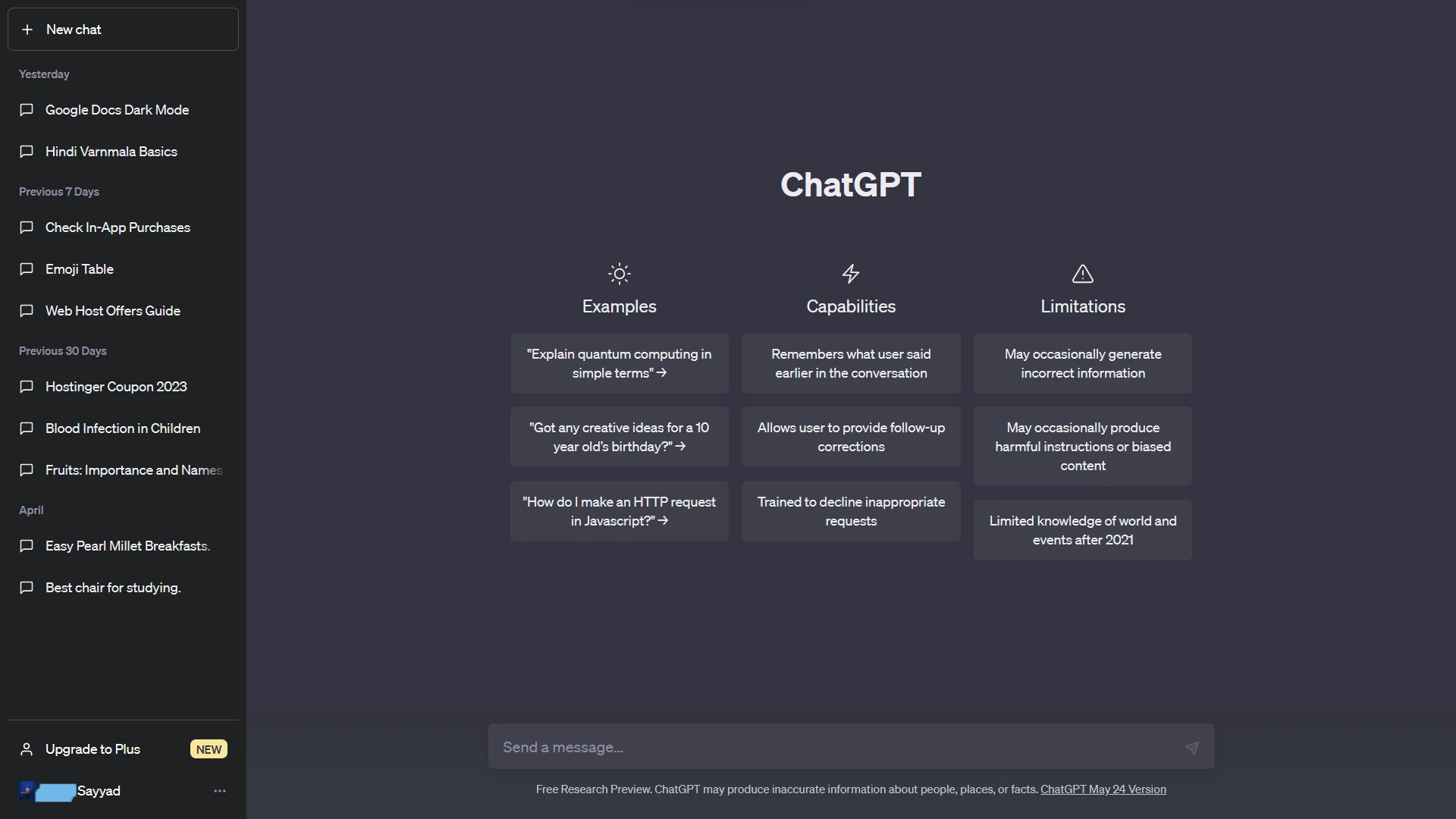ChatGPT is like having a virtual conversation with an AI. It uses a fascinating technology called natural language processing to engage in human-like conversations.
This AI is part of a broader family of AI models known as Generative Pre-trained Transformers (GPT). You’ve probably guessed it – that’s what the “GPT” stands for.

But what does ChatGPT do? ????
The Magic of ChatGPT:
ChatGPT is a generative AI, meaning you can prompt it with questions or requests, and it’ll generate humanlike responses. Think of it like a super-smart chatbot that can write articles, code, emails, and even social media posts. It’s not just about answering questions; it’s about creating content that sounds like it was written by a human.
You might be wondering, “Who created this marvel?” ????
The Brains Behind ChatGPT:
ChatGPT is the brainchild of OpenAI, a leading artificial intelligence research company. They launched ChatGPT in November 2022. OpenAI is no small player; it was founded by big names like Elon Musk and Sam Altman in 2015 and has Microsoft as a major backer.
How Does ChatGPT Work?
At the heart of ChatGPT is something called the “Generative Pre-trained Transformer” – GPT for short. This technology uses special algorithms to understand patterns in language. The model was initially GPT-3, but now it’s powered by GPT-3.5 and GPT-4, making it even smarter and more capable.
What Can You Ask ChatGPT?
The sky’s the limit when it comes to questions for ChatGPT. You can ask it just about anything, from simple inquiries to more complex problems. It’s like having a vast knowledge base at your fingertips. But, remember, ChatGPT’s knowledge only goes up to 2021, so it won’t know what happened after that.
The Many Hats of ChatGPT:
ChatGPT isn’t just for answering trivia. It’s a versatile tool that has found its way into various fields:
- Coding and debugging.
- Music composition.
- Email drafting.
- Summarizing articles, podcasts, or presentations.
- Social media scripting.
- Solving math problems.
- Creating content for websites.
- The list goes on!
ChatGPT Gets an Upgrade:
In August 2023, OpenAI introduced an enterprise version of ChatGPT. This version packs the speedier GPT-4 model, with more customization options and longer context windows. It’s a game-changer for businesses looking for powerful AI support.
The Good and the Not-So-Good:
Now, let’s talk about the pros and cons of ChatGPT. It’s a remarkable tool, but it’s not without its limitations.
Pros:
- Boosts efficiency by handling repetitive tasks.
- Saves costs compared to hiring more human employees.
- Enhances content quality.
- Serves as a virtual tutor for complex topics.
- Provides quick responses, reducing wait times.
- Offers multilingual support.
- Can tailor responses to user preferences.
Cons:
- Sometimes produces shallow responses.
- Limited to knowledge up to 2021.
- Responses may sound robotic.
- Doesn’t cite sources.
- Struggles with sarcasm and irony.
- Can get stuck on specific aspects of a question.
The Ethical Side of ChatGPT:
As with any powerful technology, ChatGPT comes with ethical concerns:
- Risk of plagiarism and deceitful use.
- The potential to spread biased information.
- Worries about job replacement.
- Privacy issues related to data handling.
Alternatives to ChatGPT:
In the fast-paced world of AI, there are alternatives to ChatGPT, like Google Bard, which is great for finding real-time information. Microsoft’s Bing also has a chat mode, and there are other text generator alternatives like Rytr and AI-Writer.
Comparison Of Chat GPT With Other AI Models
To better understand the capabilities of Chat GPT, let’s compare it with some of the other popular AI models in the market:
| Model | Developer | Architecture | Key Features | Applications |
|---|---|---|---|---|
| Chat GPT | OpenAI | Transformer | – Large-scale pre-training – Context-aware responses – High-quality text generation | – Customer support – Content creation – Virtual assistants |
| BERT | Google AI | Transformer | – Contextualized word embeddings – Pre-trained on a large corpus – Fine-tuning for specific tasks | – Sentiment analysis – Named entity recognition – Question answering |
| ELMO | Allen Institute for AI | LSTM | – Transfer learning – Pre-trained on a large corpus – Fine-tuning for specific tasks | – Sentiment analysis – Named entity recognition – Machine translation |
| ULMFiT | fast.ai | LSTM | – Transfer learning – Pre-trained on large corpus – Fine-tuning for specific tasks | – Text classification – Sentiment analysis – Language modeling |
As seen in the table above, Chat GPT stands out due to its large-scale pre-training and ability to generate high-quality text. While other models like BERT, ELMO, and ULMFiT are also pre-trained on large datasets and can be fine-tuned for specific tasks, they primarily focus on understanding and analyzing text rather than generating it.
In Conclusion:
ChatGPT is a groundbreaking tool with vast potential. It can boost efficiency, save costs, and improve content quality. But, it’s essential to remember its limitations, ethical considerations, and alternative options.
So, whether you’re a business looking for a productivity boost, a student seeking assistance, or just a curious mind, ChatGPT has something to offer. Give it a try and see how it can make your life a bit easier.
Now, over to you! Have you used ChatGPT, and what do you think about its potential and limitations? Let’s keep the conversation going! ????


